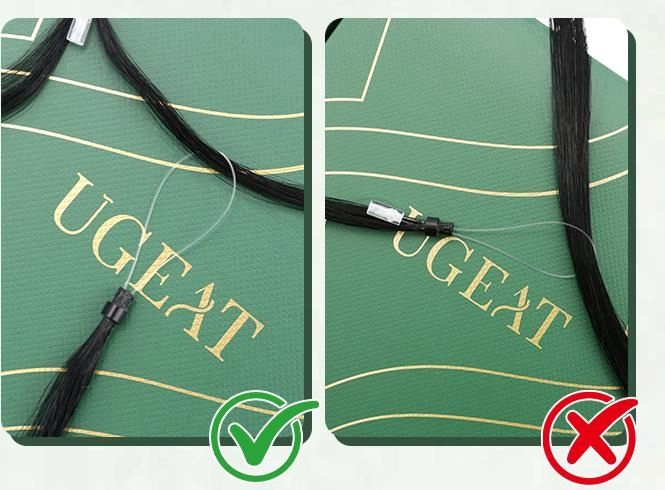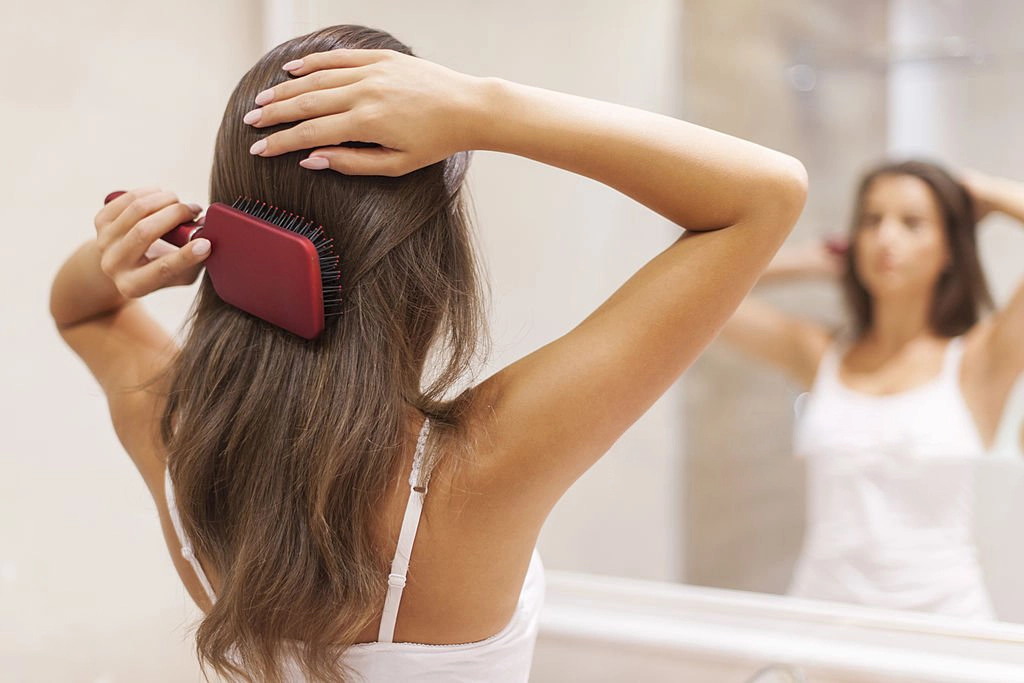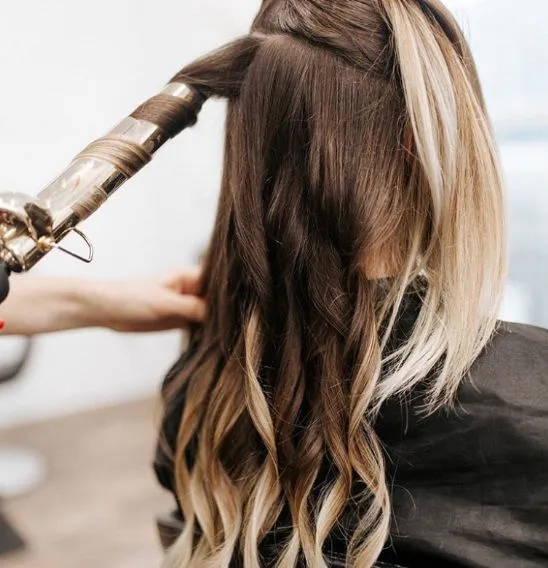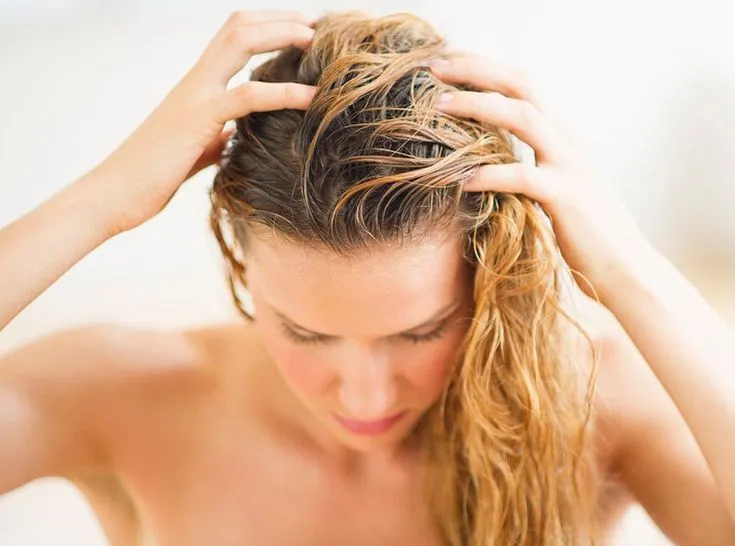Hair extensions are a fantastic way to instantly add length and volume, but many worry about the potential damage. If you’ve ever wondered how to prevent hair loss from extensions, you’re in the right place. improper techniques can indeed lead to thinning and even permanent damage. This definitive guide will show you exactly how to prevent hair loss from extensions, covering everything from expert application to daily care and safe removal. Let’s ensure your natural hair stays healthy and strong.
1.Master the Application: The First Step to Prevent Hair Loss from Extensions
✅ Prep Your Scalp & Hair
The journey on how to prevent hair loss from extensions starts with a clean scalp. Buildup can weaken bonds and harbor bacteria, leading to infection and shedding. Always do an allergy test with adhesives; a reaction can cause inflammation that triggers hair loss from extensions.
✅ Avoid Excessive Tension (Key to Preventing Traction Alopecia)
Traction alopecia from constant pulling is the primary cause of hair loss from extensions. To prevent this:
- Never install sew-ins over braids that are too tight.
- Ensure clip-ins and tape-ins lie flat without tugging..
- Avoid placing weight on fragile areas like your hairline.
✅ Control Weight & Distribution
A key lesson in how to prevent hair loss from extensions is managing weight. Extensions should not exceed 30% of your hair’s density. Overloading strains follicles. Always space them evenly to distribute tension and avoid localized hair loss from extensions.

✅ Professional Installation for High-Risk Methods
For methods like tape-ins or pre-bonded, professional installation is non-negotiable to prevent hair loss from extensions. A stylist ensures correct tension and application, avoiding DIY mistakes that rip hair out.
2.Your Daily Routine: How to Prevent Hair Loss from Extensions Every Day
✅ Gentle Detangling

Use a wide-tooth comb or soft-bristle brush starting from the ends, moving upward. Yanking through knots pulls out natural hair.
Avoid brushing wet hair (it’s more fragile)—opt for a detangling spray instead.
✅Heat & Chemical Protection

- Extensions are more delicate than natural hair. High heat (>180°C / 356°F) can:
- Melt adhesive bonds, causing slippage and hair pulling.
- Dry out natural hair, leading to breakage and thinning.
- Always use heat protectant and keep styling tools 6+ inches away from bonds.
✅Proper Washing & Moisturizing

- Shampoo gently—focus on the scalp but avoid rubbing bonded areas aggressively.
- Condition only mid-lengths to ends—product buildup near bonds weakens adhesion.
- Use sulfate-free products—harsh detergents strip natural oils, weakening hair and increasing shedding.
✅Nighttime Protection
Before bed, secure your hair in loose braids or a soft bun to minimize friction against pillows.
This prevents extension slippage and tangling while you sleep.
Click here to learn more about sleeping with hair extensions.
3.Maintenance & Removal: How to Finally Prevent Hair Loss from Extensions
✅ Professional Removal is a Must
The most critical step to prevent hair loss from extensions during removal is to see a stylist. Never rip them out yourself, as this will take your natural hair with it.
✅ Regular Scalp Checks
Monitor for redness, soreness, or thinning. These are early signs of traction alopecia. Addressing them immediately is how you prevent permanent hair loss from extensions.
✅ Post-Removal Recovery
After removal, nourish your scalp with oils like rosemary or castor oil and deep condition your hair. Recovery care is the final step in learning how to prevent hair loss from extensions long-term.
When to Avoid Extensions Entirely
- If you already have thinning hair or bald spots, extensions may worsen hair loss.
- During chemotherapy or scalp treatments, consult a doctor first—weakened follicles are more prone to damage.
- If you’ve recently had hair loss (postpartum, stress-related shedding), wait until regrowth stabilizes.
By following this guide on how to prevent hair loss from extensions, you can enjoy all the benefits without the fear of damage. Remember, the priority is always the health of your natural hair.
Have you successfully learned how to prevent hair loss from extensions? Share your experience in the comments below!

I find all about tips but no application instructions. The nano bead, tip with wire, how to use. Please.
Is the tip with wire you mentioned the microlink hair in our product?
The following is the text version of the installation method for these two products-it is recommended that you ask your hairdresser to wear it.
microlink:
1.Slip your natural hair through the loop at the end of the extension
2.Pull on the end of the loop to bring your hair through the ring 1⁄2 in (1.3 cm) from your scalp
3.Clamp the ring with pliers to flatten it and secure it to your hair
nano tip:
1. It is recommended to install it 1.5-2 cm away from the scalp when wearing it, people who are prone to allergies should pay extra attention.
2.Clamp the hair beads with pliers every 2-3 weeks to prevent hair loss.
We will also add more content in this regard later. Thank you very much for your suggestion.